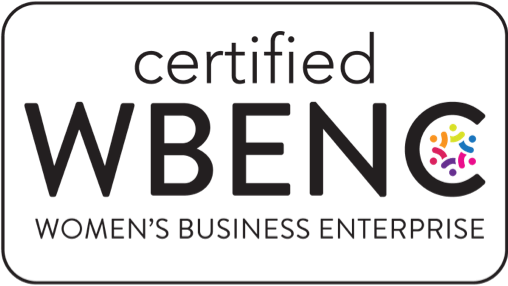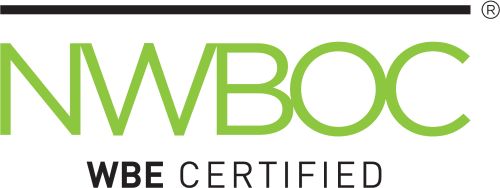Report
The state of organizational change management: U.S. employee insights

Over the past year, 63% of U.S. employees experienced at least one type of change in their workplace. Yet more than a third of employees (34%) say that those changes have not been worth the organizational effort, according to a recent Eagle Hill Consulting study about workplace change management and its impact on employees and business strategy.
Employees see the benefits of change…but suffer in the approach
Employees recognize the value of organizational changes introduced in the past year and have seen the positive impact on their work. For example, employees were more than twice as likely to say organizational changes have increased rather than decreased both their efficiency (46% versus 22%) and their focus on organizational goals (43% versus 16%). Nearly 2 out of 5 employees say organizational changes increased their collaboration and flexibility (38%), and ability to deliver value quickly (39%).
Given the acknowledged benefits, why has organizational change left a third of employees disillusioned about its worth? The answer lies in the details of how workplace change management is managed.
Our change management survey found only one in four (25%) of employees agree that their organization effectively manages change across the workforce; that their organization is prioritizing the right change (27%); and that organizational change is executed in a way that makes it easy to embrace it (24%).
Employees want improved workplace change management
Introducing change is a far cry from institutionalizing it. The findings reinforce the need for comprehensive organizational change management strategies to effectively shift employees into new ways of working and drive business results.
Research consistently shows that the most important factor in getting organizational change to stick and securing its intended benefits is getting employees to embrace it. Because change brings disruption, organizations must provide robust change management strategies and employee support (e.g., change readiness and impact, strategic communications, learning resources, stakeholder engagement, leadership and sponsorship) as change progresses and behavior change begins in earnest. When the external environment feels uncertain—whether politically, economically, or socially—such organizational support becomes even more crucial.
Our change management survey suggests that employees currently lack that support and consequently feel burdened by the process of change. Nearly half (45%) say that organizational change during the last year increased their workload and their stress levels (43%). Nearly a quarter (23%) say that change has made their job harder.
The research finds that employees have not been given adequate accommodations and tools to adjust to change. Notably, 62% of employees say their manager has not taken away any work to give additional time to learn and adjust to new changes.
The research points to significant generational differences regarding workload, with 70% of GenXers and 82% of Baby Boomers having to adjust to change without a compensating decrease in their regular work. Far fewer Millennials (54%) and GenZers (47%) have the same complaint.
When it comes to change, not all change is equal
Change comes to organizations in many forms. And our research finds employees’ receptiveness to a change varied widely depending on the type of change.
For example, when asked whether a change made the organization visibly better, worse, or about the same, the three changes employees most often cited as making the organization better were major new products and services launches (69% better vs. 13% worse), technology change (66% better vs. 11% worse) and artificial intelligence (59% better vs. 14% worse).
In contrast, employees reported that other changes made their organizations worse, rather than better, with the least positive impressions relating to return to office (46% say it made their organizations worse vs. 24% better) and culture change (44% worse vs. 41% better).
The findings indicate that changes such as new technology that affect employees only during the confines of their “9 to 5” schedule seem more readily embraced, despite the associated demands of having to learn new skills. In contrast, organizational changes that may have bleed-over effects into employees’ personal lives face a much higher hurdle to acceptance, such as return to office.
Employees want a voice in how change happens
The top changes employees would like to see include changes that improve their personal work experience. Overall, employees feel their organizations need to undertake change to make it a better place to work (52%) and to be more efficient (50%).
They are less likely to see the need for organizational changes that more directly relate to the bottom line, including changes to better serve customers (35%) and cut costs (19%). This feedback suggests that organizations should refine their change management strategies to focus on employee experience alongside business outcomes.
The research shows that employees do not have much influence when it comes to setting their desired changes in motion. While nearly 6 in 10 (57%) employees feel their voice is heard when it comes to identifying what change is needed, less than half (40%) feel listened to when it comes to how to effectively roll out changes to their team. And only a third (33%) feel their voice matters in decisions about prioritizing change initiatives.
Changing how you change for the better through organizational change management
Bringing employees along in the change journey and providing adequate organizational support is essential for achieving the intended ROI of change efforts. Here’s how organizations can make their change management strategies work better:
1
Put timing on your side to accelerate change
As the pace of change accelerates (frequently driven by digital disruption, including AI), organizations must not only make room for change but also be deliberate about when and how it lands. That means designing change management approaches around both business and employee needs. A flexible framework and a willingness to accept tradeoffs, such as a slower realization of benefits in exchange for enduring results, are key.
When people have the proper support to adapt, change adoption accelerates, burnout decreases, and ROI improves. Some examples include prioritizing changes and implementing that change in phased rollouts, lightening workloads during periods of heavy change, and other “buffers” that ease the transition for employees. Workplace change management tools such as these allow leaders to manage transitions in a way that sustains productivity and engagement.
2
Anchor change in purpose (or risk losing the plot)
Employees say the two most helpful factors in motivating them to embrace change are understanding the need for change (46%) and effective communication (35%). Purpose-driven change management strategies connect transformation efforts to business outcomes in ways employees can appreciate. Yet too often, leaders state the rationale once and assume it sticks. Real transformation requires persistent storytelling: messaging that connects strategy to purpose, tailored to teams, and reinforced across channels. Employees also point to strong leadership (26%), and transparency (22%) as essential for making change work. In short, make the “why change” answer unavoidable. Not through one-and-done comms, but by embedding purpose into every decision, message, and milestone.
3
Reimagine change management by empowering teams
Traditional change management strategies emphasize top-down, leadership-driven change and/or bottom-up change focused on individuals. However, these models fall short because they don’t reflect how work gets done today—in teams. Change is experienced collectively, not individually. That means the team, not the org chart, must be the core unit of change.
Our change management survey finds employees look first to their immediate leaders (not executive leadership) when navigating change. Nearly half (47%) say their team lead has the most influence, and 59% view their manager as a role model in the change. To make change stick, organizations must build alignment, shared purpose, and accountability at the team level. That means team leaders will need change leadership skills in addition to their performance management ones. By empowering the “middle” of the organization, team leaders can accelerate adoption and sustain change. Moreover, organizations should measure team health—such as cohesion, commitment, and openness to change—as a driver of ROI.
Methodology
These findings are from the 2025 Eagle Hill Consulting Change Management Survey conducted as part of an omnibus survey by Ipsos from August 21-25, 2025. The survey included a nationally representative sample of 1,448 adults ages 18 and older who are employed full-time or part-time.

